 |
Britain doesn't have many lizards, so surely it's not difficult to work out which species is which? Wrong! I sometimes get confused, and I know that I'm not alone. It doesn't help that lizards don't always hang around to give you a good view. Too often, you only see a flash of movement or catch a glimpse of a tail vanishing at speed under a rock or into a bush.
Anyway, as a budding reptile surveyor I've been trying to learn the key identification features that separate Britain's lizards. In doing so I have relied heavily on the two field guides mentioned at the end of this post, strongly supported by guidance and training from experts including Sue Searle, Howard Inns and Rick Sharp. My notes have somehow ended up as this blog post, which I hope that you find useful too. The photos are all my own.
It's also worth knowing that Amphibian and Reptile Conservation, who do much to conserve and promote Britain's reptiles, have prepared a useful (and free) online reptile identification guide which covers snakes as well as lizards. It can be downloaded from their website (link here).
I'm focusing here on four species: three lizards that look like lizards - Common (or Viviparous) Lizard Zootoca vivipara (pictured at the top of this blog post), Sand Lizard Lacerta agilis and the non-native Wall Lizard Podarcis muralis - as well as the legless Slow Worm Anguis fragilis. I've included Wall Lizards because they have become well-established in a number of mainly coastal sites in the south of England - many of which are in Dorset where I'm based - see my blog post here.
I've concentrated on features that can be distinguished by the field observer, ideally with a photograph, rather than anatomical details that require an 'in-hand' examination such as femoral pores and supraciliary granules. For most of us this is simply impractical, and for Sand Lizards it would be illegal without a licence, as that species is protected in the UK - so don't even think about picking one up! I'm sure that most of us would rather avoid disturbing these lovely creatures in any event.
The Slow Worm is probably the most common of all our reptiles, being found right across mainland Britain. Having no legs, it can be clearly distinguished from our other lizards, looking in the first instance more like a snake. But on closer inspection you'll see that they have a less slender and more chunky profile than our three native snakes, as well as a distinctly Common Lizard-like head.
Slow Worms are the most likely lizards to turn up in a back garden. If they arrive in yours then count your blessings and try to maintain a patch of undisturbed long grass and a few bushes for them. Compost heaps go down particularly well.
 |
| Slow Worm (male) - Dorset |
The photo above shows a male Slow Worm. These are usually a uniform light brown colour sometimes dotted with startling blue spots. In contrast, the females tend to have darker sides and/or a dark stripe along the back (the dorsal or vertebral stripe) - see below.
 |
| Sand Lizard male - RSPB Arne, Dorset |
- Sand Lizards are larger than either Common or Wall Lizards, with a total length of up to 25cm rather than 22cm (Wall Lizard) or 20cm (Common Lizard). Not that this helps with smaller individuals!
- Sand Lizards usually have two white or cream-coloured streaks down the back (dorsal streaks) - see the photo below.
- The spots on male, female and juvenile Sand Lizards are usually ocellated, meaning that they have a lighter ("eye-spot") in the middle. This is a key feature that is not present on Wall Lizards, although you need to look carefully at the spotting on female Common Lizards especially when they are flattening themselves while basking in the sun.
- As my photos show, male Sand Lizards usually have striking green flanks. However, females are brown all over, dotted with ocellated spots (no photos - apologies). But beware! Male Wall Lizards can also show green, which gets brighter during the breeding season (see the photo later in this blog post) and you can occasionally see green Common Lizards. But in both cases, any green on Common and Wall Lizards extends across the back, while on male Sand Lizards it is restricted to the sides.
- Sand Lizards are generally more heavily built, or "chunky", than Common or Wall Lizards.
- The final point to bear in mind about Sand Lizards is that in Britain they have a limited distribution, being confined generally to heathland in Dorset, Hampshire and Surrey along with sand dunes near Southport, Merseyside. They have been more recently introduced to sites in Devon, Cornwall, Berkshire, North Wales and Kent (possibly more). However, I'm not aware of any British locations where Sand Lizards co-exist with Wall Lizards.
 |
| Common Lizard - Higher Hyde Heath, Dorset - showing re-grown tail |
- Compared to Sand Lizards:
- Common Lizards generally do not show any green colour, but if green is present then it will be right across the back and not confined to the sides. It will also usually be less vivid than the green of a male Sand Lizard.
- Any spots on Common Lizards will usually not be ocellated, so will appear as white flecks rather than dark spots with a central white "eye".
- Common Lizards are smaller and more slender, with much less bulky heads than Sand Lizards (see photos below).
%20Higher%20Hyde%20Heath%2023.5.17.jpg) |
| Common Lizard - head |
 |
| Sand Lizard - head |
 |
| Wall Lizard - head |
- Compared to Wall Lizards:
- Common Lizards tend to be slightly smaller than Wall Lizards, although this is not always obvious and you very rarely (i.e. never!) see both species side-by-side to compare.
- The markings on Common Lizards are generally either speckles (including patches of white) on the males or light-coloured stripes on the females, while Wall Lizards usually have more mottled markings (see photo below).
- Common Lizards have a blunter snout than the more pointed snout of Wall Lizards. This is just about apparent in the respective head photos above, but in the field I find that I need either a very good look at the lizard or a decent photograph.
- Although by no means definitive, Common Lizards tend to be seen in flatter, grassy areas, while Wall Lizards are usually not far away from a vertical rocky habitat: they are well-named. Even though the Wall Lizard photographed below was basking on leaf litter, it was less than a metre from a large south-facing stone wall.
 |
| Wall Lizard showing mottled pattern - Abbotsbury, Dorset |
Finally, this brings us to Wall Lizards. Strictly these are called Common Wall Lizards, as there are a wide variety of wall lizard species across Europe (see Speybroeck et al., 2016), but I've deleted the "Common" in this blog for reasons of clarity, given the risk of confusion with Common Lizards.
 |
| Wall Lizard male with bright colouration - Abbotsbury, Dorset |
The main identification features that distinguish Wall Lizards from Sand and Common Lizards have already been described above, so there's no need to restate them again in detail. The important thing to remember is that the colouration of Wall Lizards is very variable, and males of the populations of southern England can have either green or brown backs depending upon where the original introduction was sourced (generally green from Italy and brown from France). Colour alone is generally not a reliable way of separating Wall Lizards from Common Lizards, although a useful tip is that some male Wall Lizards show a blue patch on the side of the belly - see the example below from Portland, Dorset. As far as I'm aware this is not a feature found in Common Lizards.
 |
| Wall Lizard male with brown back and blue sides to belly - Portland, Dorset |
Anyway, I hope that this is helpful - do let me know if I've made any errors or if anything isn't clear. I intend to update this post as I get more field experience with these species.
Postscript: For the sake of completeness, I should add that there is a further lizard species on British soil - the (Western) Green Lizard Lacerta bilineata, which as well as being a native of Jersey, an island that also hosts native Wall Lizards but no Common Lizards, has a longstanding introduced population in Bournemouth of all places. Western Green Lizards are large (up to double the size of a Sand Lizard) and truly spectacular. I have yet to get a decent photograph of one, but in compensation here's the very similar Eastern Green Lizard L. viridis photographed in northern Greece. Enjoy!
%204.5.19.jpg) |
| (Eastern) Green Lizard - Lake Kerkini, Greeve |
References
Inns, H. (2009). Britain's Reptiles and Amphibians Wildguides
Speybroeck, J. et al. (2016) Field Guide to the Amphibians & Reptiles of Europe (British Wildlife Field Guides) London: Bloomsbury.

%20FFY%20Clay%20House%2027.4.20.JPG)
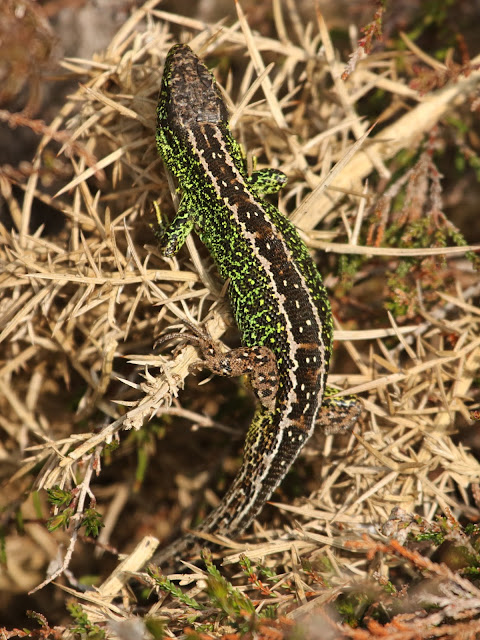
%20Abbotsbury%2025.3.16.JPG)




%2022.10.24.JPG)



%2022.10.24.JPG)
%2022.10.24.JPG)






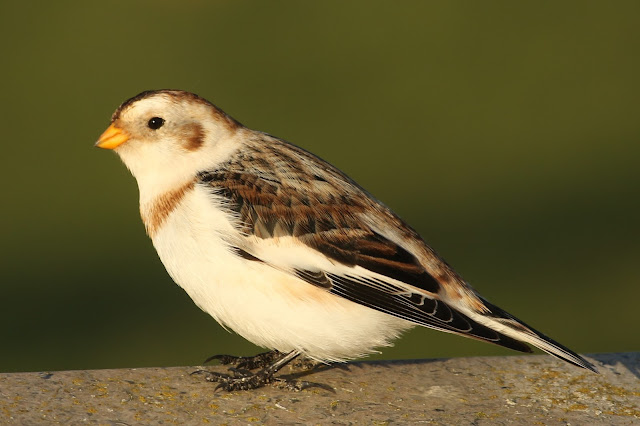




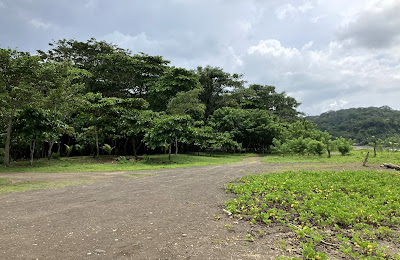

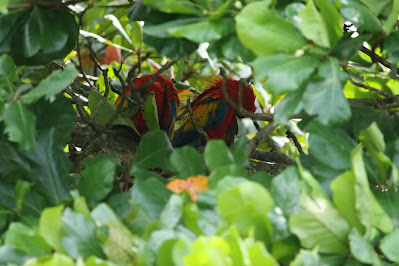





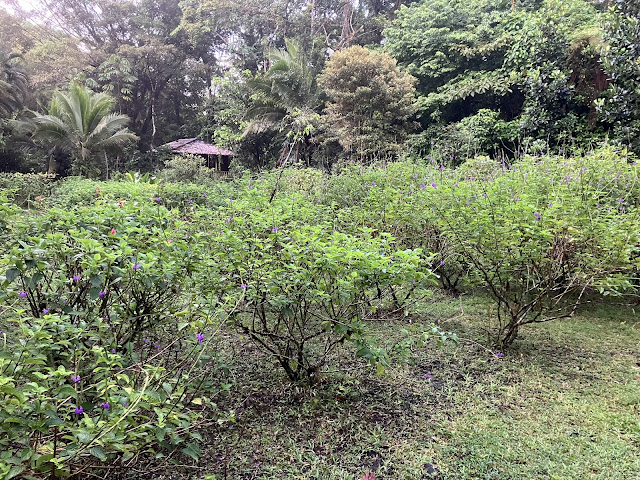
%2015.10.24.JPG)
%2018.10.24.JPG)